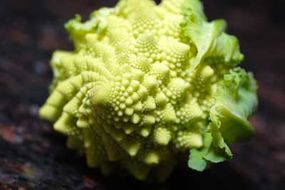You won’t find Fibonacci numbers everywhere in the natural world — many plants and animals express different number sequences. And just because a series of numbers can be applied to an object, that doesn’t necessarily imply there’s any correlation between figures and reality. As with numerological superstitions such as famous people dying in sets of three, sometimes a coincidence is just a coincidence.
But, Fibonacci numbers appear in nature often enough to prove that they reflect some naturally occurring patterns. You can commonly spot these by studying the manner in which various plants grow. Here are a few examples:
Seed heads, pinecones, fruits and vegetables: Look at the array of seeds in the center of a sunflower and you’ll notice what looks like spiral patterns curving left and right. Amazingly, if you count these spirals, your total will be a Fibonacci number. Divide the spirals into those pointed left and right and you’ll get two consecutive Fibonacci numbers. You can decipher spiral patterns in pinecones, pineapples and cauliflower that also reflect the Fibonacci sequence in this manner.
Flowers and branches: Some plants express the Fibonacci sequence in their growth points, the places where tree branches form or split. One trunk grows until it produces a branch, resulting in two growth points. The main trunk then produces another branch, resulting in three growth points. Then the trunk and the first branch produce two more growth points, bringing the total to five. This pattern continues, following the Fibonacci numbers. Additionally, if you count the number of petals on a flower, you’ll often find the total to be one of the numbers in the Fibonacci sequence. For example, lilies and irises have three petals, buttercups and wild roses have five, delphiniums have eight petals and so on.

Honeybees: A honeybee colony consists of a queen, a few drones and lots of workers. The female bees (queens and workers) all have two parents, a drone and a queen. Drones, on the other hand, hatch from unfertilized eggs. This means they have only one parent. Therefore, Fibonacci numbers express a drone’s family tree in that he has one parent, two grandparents, three great-grandparents and so forth.
The human body: Take a good look at yourself in the mirror. You’ll notice that most of your body parts follow the numbers one, two, three and five. You have one nose, two eyes, three segments to each limb and five fingers on each hand. The proportions and measurements of the human body can also be divided up in terms of the golden ratio. DNA molecules follow this sequence, measuring 34 angstroms long and 21 angstroms wide for each full cycle of the double helix [source: Jovonovic].
Why do so many natural patterns reflect the Fibonacci sequence? Scientists have pondered the question for centuries. In some cases, the correlation may just be coincidence. In other situations, the ratio exists because that particular growth pattern evolved as the most effective. In plants, this may mean maximum exposure for light-hungry leaves or maximum seed arrangement.

